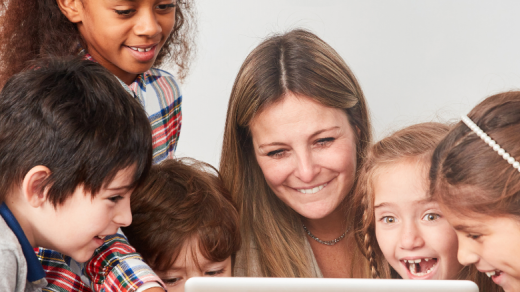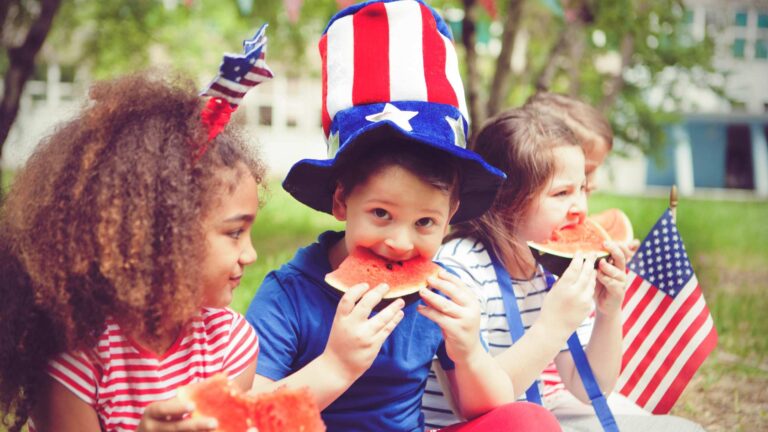Improving autism social skills is essential to the growth and development of children on the spectrum. Social interaction and communication difficulties are common features of Autism Spectrum Disorder. Many children on the spectrum find it hard to take turns in conversation. They may not understand the nonverbal cues essential for communication, making them appear withdrawn or uninterested in social interaction. Another issue is that children with autism may demonstrate repetitive or restrictive behaviors, such as head-banging, spinning, rocking, or repeating phrases and actions, which can make social interactions difficult.
This blog post will discuss eight activities to help children with their autism social skills! You can implement these at home, with or without your providers. Have fun!
Activity #1: Playing with peers to integrate autism social skills.
One great way to help children with autism interact socially is to encourage them to play with their peers. Parents and providers can do this in several ways, such as going to the park, signing up for local classes, or scheduling playdates. While Applied Behavior Analysis (ABA) therapy will teach children skills they need to function appropriately in various settings, playing with others will help them refine their autism social skills. Children with autism will learn to share, take turns, and communicate ideas through playing with peers.
Activity #2: Encourage respecting boundaries and personal space through games and conversations.
Many children with autism have trouble respecting the personal space required by others. Because of sensory challenges, children on the spectrum can often stand too close, touch, hit, smell or crash into other people. To address this boundary issue, therapists and parents can better help children understand the importance of personal pace. The Hula Hoop game is perfect for this! Here’s how you play:
- Place two hula hoops on the ground beside each other.
- Place the child in the middle of one hula hoop while you stand in the other.
- Explain that the circumference of the hula hoop is “your space” and “my space.”
- When this is understood, invite the child into “your space.”
- When they have entered your space, give them a big hug or lots of vocal praise.
- When done reinforcing the child, encourage them to go back to their space.
- Take turns inviting each other into each other’s space.
Activity #3: Go on group outings to engage autism social skills!
Another great way to help children with autism interact socially is to go on group outings. This could include going to the zoo, the movies, or even just out for ice cream. Group outings allow children to practice autism social skills such as taking turns, sharing, and conversing. They also allow children to meet new people and make friends. Incorporating experiences as a group into your child’s life is also healthy. Being in a group setting is a natural part of life; having the skills to manage the experience helps a child participate in more social gatherings.
Activity #4: Engage in imitation games!
All children learn skills through imitating features of their environment. Imitation and awareness are essential parts of early childhood development. They provide a foundation for later social and communication skills. For children with autism, developing these skills can be a challenge. However, imitation play is an integral part of ABA therapy, which is a standard treatment for autism.
Imitation play helps children to learn how to interact with others and understand the expectations of social situations. It also helps them to develop fine motor skills and to practice turn-taking. As children imitate the actions of others, they learn how to communicate and cooperate. As a result, imitation play can be a powerful tool for helping children with autism to develop essential social and communication skills.
By being able to observe, we also learn about our environment. For instance, if you are on the train and suddenly see all the individuals around you begin standing up and exiting the vehicle, you know it is probably essential to imitate that behavior and exit. Observing and knowing that imitation can sometimes be necessary allows us to be safe and make more informed decisions. By developing these skills early, we learn more about our surroundings and how to participate in our environment.
Activity #5: Practice and integrate imaginative play!
We’ve established that all children learn through forms of imitation. But children with autism additionally benefit as visual learners. To encourage imaginative play in children with autism, demonstrate how to use imagination with their toys. To do this, spread out the toys you will use. A great addition to this activity is a teddy bear or stuffed animal. Set up an imaginative scenario like teddy doesn’t feel well and needs to visit the doctor. While in active play:
- Place bandages on teddy
- Listen to teddy’s heartbeat
- Pretend to take teddy’s temperature
- Give teddy some medicine
By playing games that include pretending and imagination, children learn how to do this with peers!
Activity #6: Practice turn-taking whenever possible!
One crucial skill a child with autism can learn through ABA therapy is taking turns. Taking turns increases peer communication, active play, and cooperation. Here are some ways to increase opportunities for taking turns to improve autism social skills:
- Create a schedule or visual aid that clearly shows when it is the child’s turn. This can help the child understand and predict when it is their turn to act.
- Use prompts and cues to remind the child to take turns. For example, you could say, “Your turn” or “It’s your turn to roll the dice.”
- Reinforce the child to take turns by providing positive reinforcement such as praise, stickers, or special privileges.
- Model taking turns yourself so the child can see how it is done.
- Play games that encourage turn-taking.
Taking turns is essential for children with autism to develop improved social interactions. Following these tips can help your child learn how to take turns and promote positive social interactions.
Activity #7: Include board games in your family fun!
Board games and structured activities like them are great for children with autism because they build upon the concept of sharing while adding social rules to the experience. Rules are important because they are necessary to play the game correctly. If the rules aren’t followed, the game does not work. This is a great lesson for life!
Some great games to experiment with are Sorry, Candy Land, Jenga, and Life, among many others. These games will be fun while working on autism social skills like taking turns, waiting, being aware of your peers, following rules, and finishing a task. By including board games, you also instill the concept that following rules can be fun.
Activity #8: Observe emotions in others via YouTube videos or episodes of your child’s favorite series.
Many children with autism tend to under-react or overreact in daily life situations. This is especially true when in an unfamiliar circumstance. Regular social outings like going to the pediatrician, attending therapy, or getting a haircut can cause severe anxiety for a child on the spectrum.
A great way therapists help children manage their emotions when faced with new or challenging social situations is by having the child cope ahead. The child can do this through exposure and observing the emotion before entering the setting. Have the child observe another child’s feelings through videos. For example, if preparing to visit the dentist, find a video of a child visiting the dentist and going through the routine. This will help a child on the spectrum see and comprehend the social norms surrounding the situation and the emotions they can expect to emote.
Some therapists have favorite YouTube channels they frequent with their clients. Others enjoy something more mainstream, like Sesame Street. Through these short videos, children can grow more comfortable with situations like seeing a medical provider, sharing toys, going to school, and trying new foods.
Another method of observing emotions in others is through social stories. Social stories are helpful because they can depict “appropriate behavior” in social situations that might otherwise be confusing to a child with autism. Other benefits of social stories include:
- Teaching autism social skills like saying “thank you,” “please,” and “sorry.”
- Helping a child understand complicated emotions in themselves and others
- Regulating and managing emotions within social settings
- Setting up expectations
- Lowering anxiety
ABA Therapy and Autism Social Skills
Autism can be incredibly isolating for both children and adults. However, there are effective interventions that can help to improve autism social skills. Applied Behavior Analysis (ABA) therapy is one of the most extensively researched autism treatments and is very effective at improving various skills.
ABA therapy breaks down complex social interactions into small, manageable steps. With the help of a trained therapist, children with autism can learn to take turns in conversation, make eye contact, and understand nonverbal cues. These skills can vastly improve the quality of life for children with autism and their families.
This blog post has discussed eight activities to help children with autism interact socially! By using these simple activities, you will see more opportunities for socialization. Additionally, you will have fun watching your child develop the confidence they need to be active, socially healthy children.
For more information on how ABA therapy can help your child develop social skills, call us at 844-923-4222 or visit us at abacenters.com.







